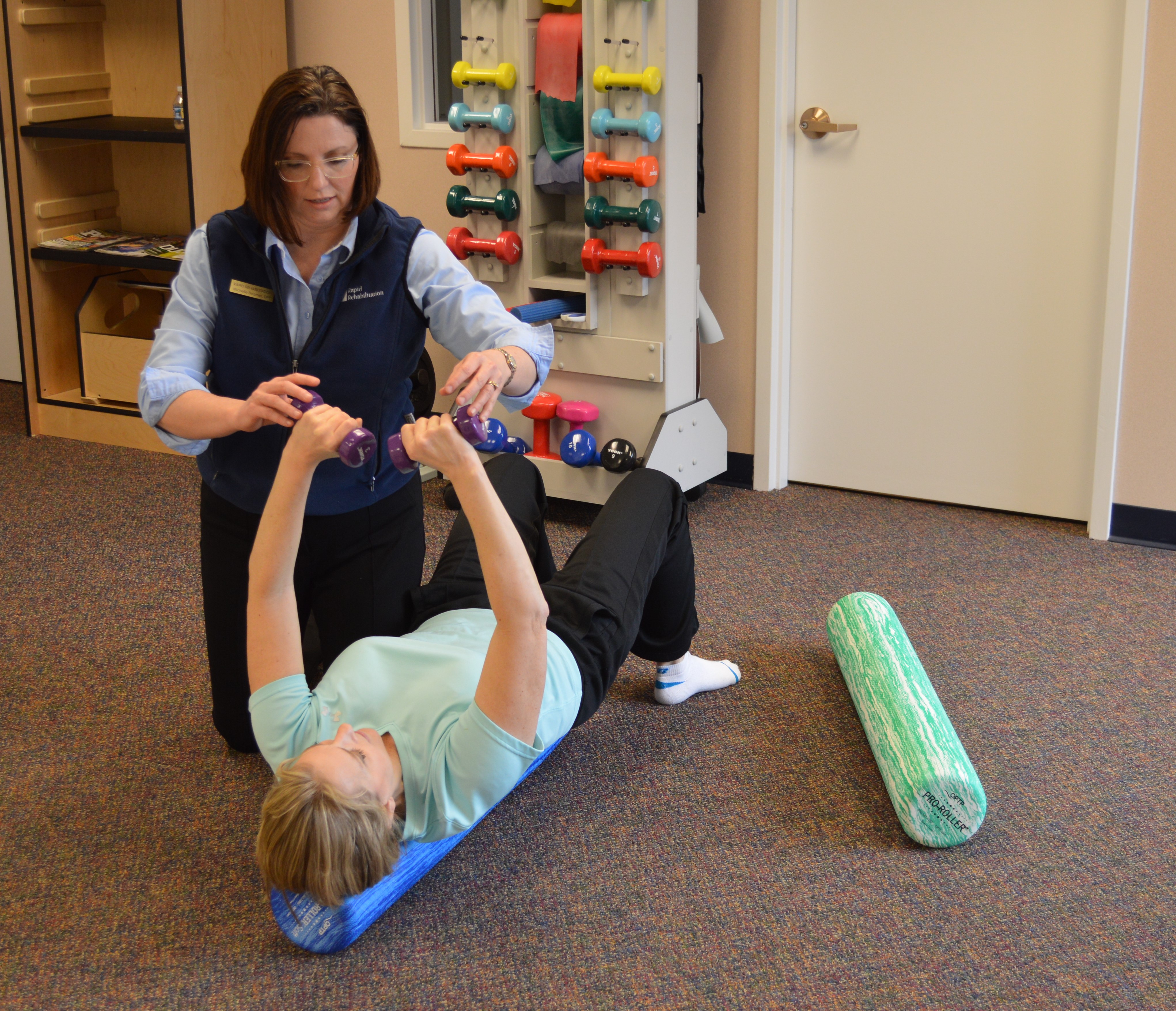Get on a (foam) roll
How to use a foam roller to relieve muscle stress and soreness

Dr. Michelle Beamer, PT, DPT, Cert MDT, ASTYM, Rapid Rehabilitation guides me through my roller routine.
When we hear the term DIY, we usually think of home improvement, but in an age when insurance coverage is uncertain and responsibility for one’s own health care is more important than ever, it is empowering to know there are many things we can do at home to take care of ourselves. Recently I discovered a physical therapy tool that I now use daily to maintain the progress I made in therapy sessions.
Everyone likes a massage, and now you can do it for yourself with a number of tools designed for self-massage. The most common of these are foam rollers, which can be used for a variety of applications that can release muscle tension, stretch tense areas and rub out sore spots.
Manipulating your body on a foam roller gives you a sense of control over what muscles need the most work and how much pressure to apply.
A company named OPTP makes a wide variety of these rollers. They have rollers of different density and firmness, different textures, sizes, links, and even an assortment of colors and patterns. For just about every musculoskeletal ailment, they make a roller for that.
My roller of choice Pro-Roller soft style, which runs $22.50 to $36. Since I am a bit of a light weight when it comes to “no-pain, no-gain,” I prefer a softer consistency roller which I find more comfortable, particularly on my neck and back where I have chronic soreness and stiffness.

Rollers come in a variety of firmnesses, textures, sizes and shapes.
The soft compression of this roller works well on tight and rigid areas and is ideal for lying supine. In this position I use the roll like a weight bench, using light dumbbells to do chest flies; or I edge up to the top of the roll to do neck extensions.
For these exercises I lie with the roll in the middle of my back, cushioning my spine. This is also a great position to do core exercises where I lift one arm off of the floor and raise the opposite leg, holding that pose while balancing to keep the roll in place.
A terrific feature of foam rollers is that they are easy to use, relatively inexpensive, easy to store — hidden away under a bed or desk, and you can conveniently use a roller several times a day without a lot of set up, to get in a little relief or relaxation when needed, even at work, if you have the space and privacy where you can lie down on a floor.

Rollers can be used to perform core exercises for balance and strengthening.
For those people who like to have someone walk on their back to crack it, rollers let you achieve this same effect using your own weight against the roller, and if that is not enough pressure you can apply force as you roll. When I first began rolling, my back would crack frequently; then, as I rolled more often, the cracking diminished, as my alignment improved.
There are plenty of online videos and articles about roller exercises, though I would advise getting a baseline program from a professional physical therapist who can tell you if there’s any contraindications with your particular condition. My physical therapist provided me with an illustrated printout of base exercises which I have built upon, and already within six weeks I have seen measurable improvements of 30 and 40 percent in my flexibility and range-of-motion in my problem areas. Clearly, I am on a roll.

